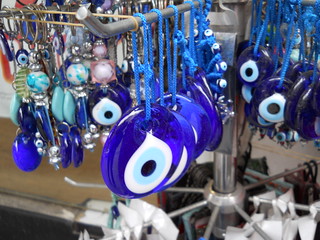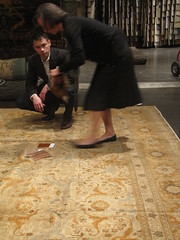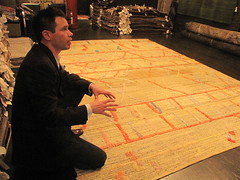While walking towards Tunel Square on Istikal, Megan and I came across an art display in a building. There was no flashy sign outside, and the music wasn’t loud enough to forcefully pull us in. But whatever reason, we decided to go inside and take a look. Unknowingly (but not unwillingly), we stumbled upon “Revolution Revelation,” Mercan Dede and Carlito Delceggio’s (or the “Romantic Rebels”) art exhibit

The six floors (yes, six) capture the work Dede’s and Dalceggio’s have done over the past ten years. Among other things, were was a ten-foot Buddha, multiple “houses” that came alive when you put on 3-D glasses and photo gallery on the top floor that services as a chronicle of their process. Different inspirational messages are intwined with the artwork, such as “Provoke Your Own Illumination Set Yourself On Fire.”
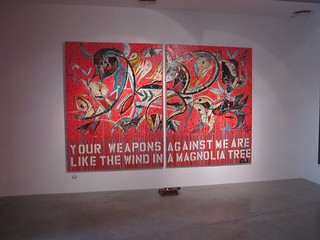
What’s interesting to me is the strong tone the art carries. They aren’t criticizing one leader or government style in particular, but I guess you could classify the pieces as “anti-establishment.” But more accurately, as Megan put it later: “It was a message of religious unification and peace.” A message, I think, that every country needs.
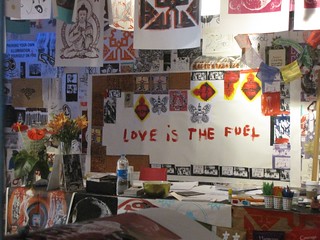


 Antakya -more commonly known as Antioch to most Christians- is an outstanding place. Obviously, it has religious significance, but people tend to forget that many of history’s ‘A-listers’ had a personal connection to the area.
Antakya -more commonly known as Antioch to most Christians- is an outstanding place. Obviously, it has religious significance, but people tend to forget that many of history’s ‘A-listers’ had a personal connection to the area.
 A variety of tools are scattered across his very cluttered work station which reeks of fresh leather and noxious glue. Using an old, giant sewing machine, a couple of “shoe stretchers” and a variety of large shears, he can remedy most shoe problems -too tight, too big, too tall, too short.
A variety of tools are scattered across his very cluttered work station which reeks of fresh leather and noxious glue. Using an old, giant sewing machine, a couple of “shoe stretchers” and a variety of large shears, he can remedy most shoe problems -too tight, too big, too tall, too short.
